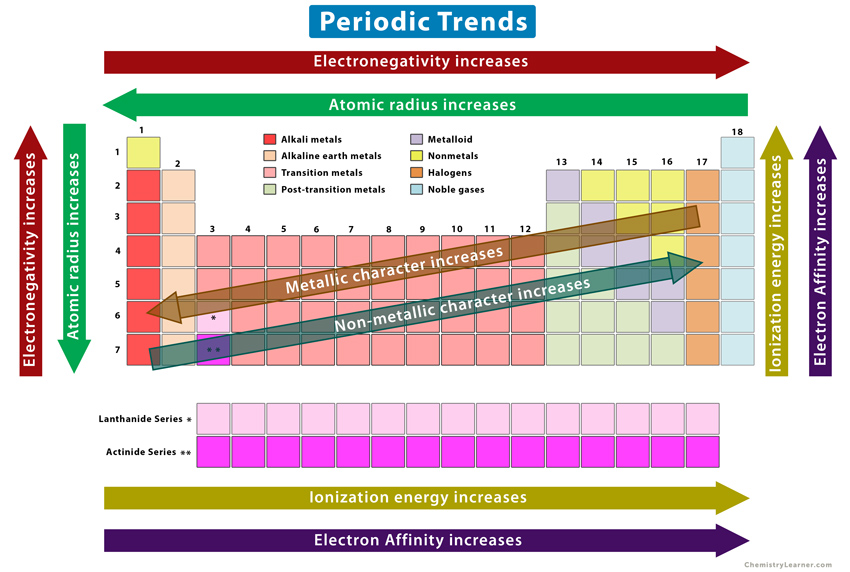IB (SL) / AP Chemistry 1 Unit 3 Quantitative Chemistry
}}The Periodic Table and Physical Properties}}
}}The Periodic Table}}
Elements are placed in order of increasing atomic number.
Elements in the same group have the same number of valence electrons.
Elements in the same period have the same outer shell of valence electrons.
- Group 1 - Alkali metals
- Group 17 - Halogens
- Group 18 - Noble Gases
Elements in the same period or group share similar properties and change in properties, this is called periodicity.
}}Atomic Radius}}
The atomic radius is the distance from the nucleus to the outermost electron.
Atomic radius increases as you head to the left and down (Rb).
}}Ionic Radius}}
Cations - fewer electrons than protons (smaller).
Anions - more electrons that protons (larger).
Ionic radius increases as you head to the left and down.
}}Melting Points}}
Melting point depends on the structure of the atom and the type of IMF.
}}Electronegativity}}
The relative measure of the attraction that an atom has for a shared pair of electrons when it is covalently bonded to another atom. As the size of the atom decreases the electronegativity increases.
Electronegativity increases as you head right and up.
}}First Ionization Energy}}
The energy required to remove one electron from an atom in its gaseous state.
First Ionization Energy increases as you head up and generally right.

<<The Period Table and Chemical Properties<<
<<Group 1 - The Alkali Metals<<
Alkali metals react with water to form an alkali solution of the metal hydroxide and hydrogen gas.
They all react with chlorine, bromine, and iodine to form ionic salts.
<<Group 7 - Halogens<<
Halogens react by gaining one or more electrons to form halide ions. They are good oxidizing agents. The reactivity decreases down the group.